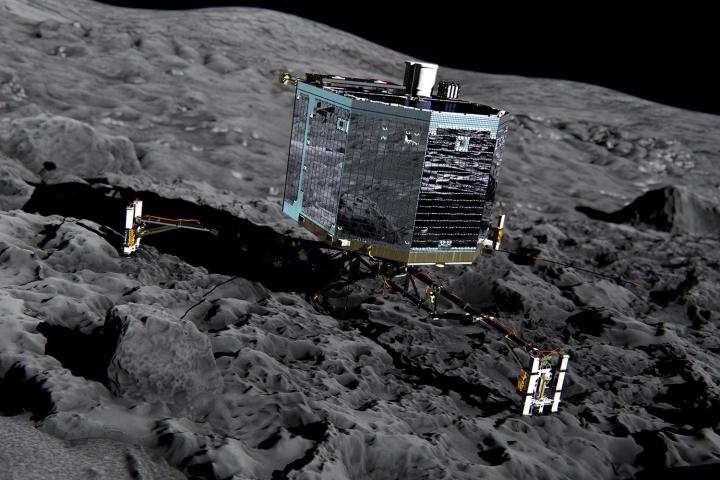
As the European Space Agency noted, new photos of the Philae probe were taken on September 2 “by the OSIRIS narrow-angle camera as the orbiter came within 2.7 km of the surface and clearly show the main body of the lander, along with two of its three legs.” It’s been a long time since the human race has been capable of making contact with Philae, following its landing on November 12, 2014.
“With only a month left of the Rosetta mission, we are so happy to have finally imaged Philae, and to see it in such amazing detail,” said Cecilia Tubiana of the Optical, Spectroscopic, and Infrared Remote Imaging System (OSIRIS), who was one of the first to see the images when they were downloaded this past weekend.
For the last several months, the Philae was given up as lost, as it hadn’t landed where intended. “Instead of landing on a flat spot as planned, it bounced and flew for another two hours, ending up … somewhere,” NPR science correspondent Nell Greenfieldboyce said. “Controllers could talk to it, but its exact whereabouts remained unknown.”
But now, hope has been restored. “This remarkable discovery comes at the end of a long, painstaking search,” Patrick Martin, ESA’s Rosetta Mission Manager, says in a blog post regarding the discovery. “We were beginning to think that Philae would remain lost forever. It is incredible we have captured this at the final hour.”
The ESA promises that further information will soon be made available, but for now, everyone is just celebrating Philae’s discovery.


